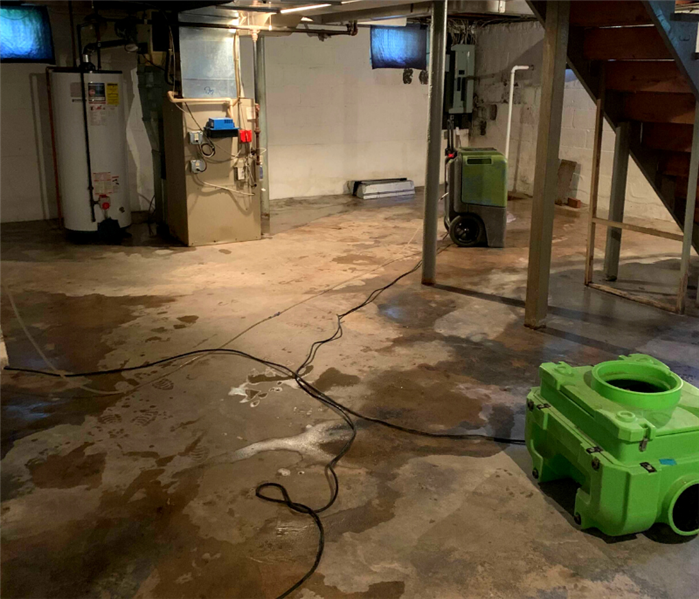How To Quickly Dry Concrete After A Flood
11/3/2020 (Permalink)
When you experience flooding in a part of your home with concrete floors such as a garage, crawlspace, basement, or utility closet, you'll want to get the water cleaned up as soon as possible. And when you just have a large puddle or small amount of flooding, you may not want to file an insurance claim or pay a water damage restoration company to do it for you.
We've put together this guide to help explain how to dry concrete after a flood to save you an insurance claim or paying out of pocket. Follow these tips and your concrete floor should be dry in no time.
Drying Wet Concrete Floors
Move any furniture or carpets
This will make it much easier to dry the affected area. If you leave wet items in an area that you are trying to remove moisture from, they will only cause the process to take longer. Move items to a place where they can dry separately.
Remove all water
You'll want to remove as much flood water as possible. For large puddles or very shallow flooding, you can go to your local home improvement store to rent a wet-dry vacuum. Use this to suck up standing water. Then, use mops, towels, and buckets to sop up the rest of the water from the floor.
Clean & sanitize
You want to make sure that no dirt, debris, or bacteria is left behind from the flooding. This step can also help prevent mold growth after flooding or water damage. You can use a mop and cleaners such as castile soap, liquid dish soap, or mild floor cleaners. Create a cleaning solution, mop the floor with it, and then rinse with a mop and just water.
Start the drying process
Your concrete will not be completely dried just by sucking up the water and leaving it as is. Set up multiple fans and set them on high. You'll likely need more than one fan, as household models are not as strong as the ones water damage restoration companies use. Point the fans towards the wettest areas. If there are any small puddles, make sure that you see air movement on top of the water so you know it will evaporate and dry.
In addition to fans, you'll need to set up dehumidifiers. Once again, you'll likely need more than one to properly remove all the moisture from the air. You must use a dehumidifier along with your fans so that all excess moisture is eliminated and doesn't leave conditions that will produce mold growth. Be sure to pour out the water collection bucket or else the dehumidifiers will stop working and greatly slow down your drying process.
Leave fans and dehumidifiers out
If you check on your flood damaged concrete and notice there is no more standing water or puddles - don't turn your equipment off just yet. Although there may not be any visible water, it's likely the area still has a high level of moisture. At this point in the drying process, the water on the concrete floor has simply evaporated but is still present. You may turn fans off but it is a good idea to leave dehumidifiers running for a few days to make sure there is no lingering moisture.





 24/7 Emergency Service
24/7 Emergency Service
